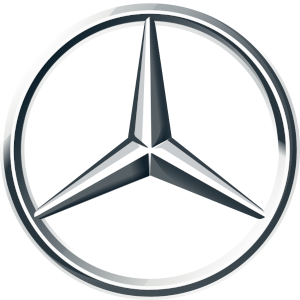
Mercedes-Benz Group AG
XETRA:MBG


| US |

|
Johnson & Johnson
NYSE:JNJ
|
Pharmaceuticals
|
| US |

|
Berkshire Hathaway Inc
NYSE:BRK.A
|
Financial Services
|
| US |

|
Bank of America Corp
NYSE:BAC
|
Banking
|
| US |

|
Mastercard Inc
NYSE:MA
|
Technology
|
| US |

|
UnitedHealth Group Inc
NYSE:UNH
|
Health Care
|
| US |

|
Exxon Mobil Corp
NYSE:XOM
|
Energy
|
| US |

|
Pfizer Inc
NYSE:PFE
|
Pharmaceuticals
|
| US |

|
Palantir Technologies Inc
NYSE:PLTR
|
Technology
|
| US |

|
Nike Inc
NYSE:NKE
|
Textiles, Apparel & Luxury Goods
|
| US |

|
Visa Inc
NYSE:V
|
Technology
|
| CN |

|
Alibaba Group Holding Ltd
NYSE:BABA
|
Retail
|
| US |

|
JPMorgan Chase & Co
NYSE:JPM
|
Banking
|
| US |

|
Coca-Cola Co
NYSE:KO
|
Beverages
|
| US |

|
Walmart Inc
NYSE:WMT
|
Retail
|
| US |

|
Verizon Communications Inc
NYSE:VZ
|
Telecommunication
|
| US |

|
Chevron Corp
NYSE:CVX
|
Energy
|
Utilize notes to systematically review your investment decisions. By reflecting on past outcomes, you can discern effective strategies and identify those that underperformed. This continuous feedback loop enables you to adapt and refine your approach, optimizing for future success.
Each note serves as a learning point, offering insights into your decision-making processes. Over time, you'll accumulate a personalized database of knowledge, enhancing your ability to make informed decisions quickly and effectively.
With a comprehensive record of your investment history at your fingertips, you can compare current opportunities against past experiences. This not only bolsters your confidence but also ensures that each decision is grounded in a well-documented rationale.
Do you really want to delete this note?
This action cannot be undone.

| 52 Week Range |
46.62
62.3
|
| Price Target |
|
We'll email you a reminder when the closing price reaches EUR.
Choose the stock you wish to monitor with a price alert.

|
Johnson & Johnson
NYSE:JNJ
|
US |

|
Berkshire Hathaway Inc
NYSE:BRK.A
|
US |

|
Bank of America Corp
NYSE:BAC
|
US |

|
Mastercard Inc
NYSE:MA
|
US |

|
UnitedHealth Group Inc
NYSE:UNH
|
US |

|
Exxon Mobil Corp
NYSE:XOM
|
US |

|
Pfizer Inc
NYSE:PFE
|
US |

|
Palantir Technologies Inc
NYSE:PLTR
|
US |

|
Nike Inc
NYSE:NKE
|
US |

|
Visa Inc
NYSE:V
|
US |

|
Alibaba Group Holding Ltd
NYSE:BABA
|
CN |

|
JPMorgan Chase & Co
NYSE:JPM
|
US |

|
Coca-Cola Co
NYSE:KO
|
US |

|
Walmart Inc
NYSE:WMT
|
US |

|
Verizon Communications Inc
NYSE:VZ
|
US |

|
Chevron Corp
NYSE:CVX
|
US |
This alert will be permanently deleted.
Mercedes-Benz Group AG



Mercedes-Benz Group AG, a titan of the global automotive industry, traces its roots to the pioneering days of the automobile in the late 19th century. With its headquarters in Stuttgart, Germany, the company has consistently positioned itself as a symbol of luxury, engineering excellence, and innovation. From its outset, Mercedes-Benz forged a path of technological advancement and premium quality, becoming renowned for its passenger vehicles that blend performance, luxury, and safety. As a vertically integrated company, it not only designs and manufactures vehicles but also invests significantly in research and development to maintain its competitive edge and uphold its reputation for innovation. The brand's strong identity is magnified through its iconic three-pointed star, signifying dominance over land, sea, and air—a testament to its broad ambitions and achievements.
Today, Mercedes-Benz Group AG generates revenue through several strategic channels. Primarily, it earns from the sale of its high-end automobiles, ranging from sedans and SUVs to sports cars and electric vehicles. In recent years, the company has expanded its portfolio to embrace the electric revolution with its EQ lineup, signifying a dedicated shift toward sustainable mobility. Additionally, Mercedes-Benz leverages its finance and leasing services, providing flexible purchasing options to its clientele. Further diversifying its income streams, the company capitalizes on after-sales services, including maintenance and parts distribution, ensuring a continuous engagement with its customer base. This multi-faceted approach not only solidifies its position in the luxury automotive market but also ensures a sustained revenue flow that stands resilient against the changing tides of the automobile industry.

Mercedes-Benz Group AG, a titan of the global automotive industry, traces its roots to the pioneering days of the automobile in the late 19th century. With its headquarters in Stuttgart, Germany, the company has consistently positioned itself as a symbol of luxury, engineering excellence, and innovation. From its outset, Mercedes-Benz forged a path of technological advancement and premium quality, becoming renowned for its passenger vehicles that blend performance, luxury, and safety. As a vertically integrated company, it not only designs and manufactures vehicles but also invests significantly in research and development to maintain its competitive edge and uphold its reputation for innovation. The brand's strong identity is magnified through its iconic three-pointed star, signifying dominance over land, sea, and air—a testament to its broad ambitions and achievements.
Today, Mercedes-Benz Group AG generates revenue through several strategic channels. Primarily, it earns from the sale of its high-end automobiles, ranging from sedans and SUVs to sports cars and electric vehicles. In recent years, the company has expanded its portfolio to embrace the electric revolution with its EQ lineup, signifying a dedicated shift toward sustainable mobility. Additionally, Mercedes-Benz leverages its finance and leasing services, providing flexible purchasing options to its clientele. Further diversifying its income streams, the company capitalizes on after-sales services, including maintenance and parts distribution, ensuring a continuous engagement with its customer base. This multi-faceted approach not only solidifies its position in the luxury automotive market but also ensures a sustained revenue flow that stands resilient against the changing tides of the automobile industry.
Results In Line: Mercedes-Benz reported Q3 numbers that matched expectations and are in line with full-year guidance.
Share Buyback: Management announced a new share buyback program of up to EUR 2 billion, starting in November and running for up to 12 months.
Profitability: The company achieved solid adjusted EBIT (EUR 2.1 billion) and healthy free cash flow (EUR 1.4 billion), with improved cost efficiencies.
Strong Cash Position: Net industrial liquidity remains robust at EUR 32 billion.
Product Pipeline: A major product launch program is underway, including the new CLA (noted for its strong market reception), and expansion in the top-end and electric vehicle segments.
China Remains Challenging: Management confirmed ongoing pricing and volume headwinds in China due to intense competition and cautious consumers.
Guidance Maintained: Full-year guidance ranges for sales, margins, and xEV share were confirmed, with some upward adjustment to cash conversion rate expectations.
Cost Cutting: Significant cost savings were achieved, with further reductions targeted through restructuring and efficiency programs.
Management

Ola Källenius is a prominent figure in the automotive industry, serving as the Chairman of the Board of Management of Mercedes-Benz Group AG. Born on June 11, 1969, in Västervik, Sweden, Källenius pursued a career in engineering and management that would see him rise to the top of one of the world's leading luxury car manufacturers. He studied at the Stockholm School of Economics and the University of St. Gallen, with a focus on finance and accounting, which provided him with a strong educational foundation. Källenius joined Daimler-Benz AG as a trainee in 1993 and over the years held various positions within the company, gaining extensive experience across different aspects of the automotive industry. His deep understanding of the business, combined with his innovative vision, led him through crucial roles such as the head of the Mercedes-Benz high-performance division, AMG, and the head of group research and Mercedes-Benz Cars development. In 2015, he joined the Board of Management of Daimler AG (now Mercedes-Benz Group AG), where he was responsible for Mercedes-Benz Cars Marketing & Sales. Källenius became the first non-German CEO of the company on May 22, 2019, succeeding Dieter Zetsche. As CEO, he has been instrumental in driving the company’s transition towards electric mobility and sustainability. Under his leadership, Mercedes-Benz has focused on expanding its electric vehicle lineup and embracing digital transformation to maintain its competitive edge in the evolving automotive market. His strategic direction emphasizes sustainability, aiming for a carbon-neutral fleet and fostering technological innovation within the brand.

He studied at the Stockholm School of Economics and the University of St. Gallen, with a focus on finance and accounting, which provided him with a strong educational foundation. Källenius joined Daimler-Benz AG as a trainee in 1993 and over the years held various positions within the company, gaining extensive experience across different aspects of the automotive industry.
His deep understanding of the business, combined with his innovative vision, led him through crucial roles such as the head of the Mercedes-Benz high-performance division, AMG, and the head of group research and Mercedes-Benz Cars development. In 2015, he joined the Board of Management of Daimler AG (now Mercedes-Benz Group AG), where he was responsible for Mercedes-Benz Cars Marketing & Sales.
Källenius became the first non-German CEO of the company on May 22, 2019, succeeding Dieter Zetsche. As CEO, he has been instrumental in driving the company’s transition towards electric mobility and sustainability. Under his leadership, Mercedes-Benz has focused on expanding its electric vehicle lineup and embracing digital transformation to maintain its competitive edge in the evolving automotive market. His strategic direction emphasizes sustainability, aiming for a carbon-neutral fleet and fostering technological innovation within the brand.

Harald Wilhelm is a prominent German business executive known for his role as the Chief Financial Officer (CFO) of Mercedes-Benz Group AG. He joined the company in April 2019, bringing with him extensive experience in the financial sector and the automotive industry. Before his tenure at Mercedes-Benz, Wilhelm had a significant career at Airbus, where he served in various financial roles, including as the CFO of Airbus Group from 2012 to 2018. He played an instrumental role in shaping Airbus's financial strategies and was involved in key decisions that helped steer the company through various challenges. At Mercedes-Benz, Harald Wilhelm is responsible for overseeing the company's financial operations, including financial planning, controlling, accounting, and investor relations. His leadership is critical in driving financial efficiency and supporting Mercedes-Benz's strategic initiatives toward innovation and sustainability in the automotive sector. Wilhelm is known for his analytical approach and strategic financial management, contributing to the overall growth and success of the organizations he has been a part of throughout his career.

Before his tenure at Mercedes-Benz, Wilhelm had a significant career at Airbus, where he served in various financial roles, including as the CFO of Airbus Group from 2012 to 2018. He played an instrumental role in shaping Airbus's financial strategies and was involved in key decisions that helped steer the company through various challenges.
At Mercedes-Benz, Harald Wilhelm is responsible for overseeing the company's financial operations, including financial planning, controlling, accounting, and investor relations. His leadership is critical in driving financial efficiency and supporting Mercedes-Benz's strategic initiatives toward innovation and sustainability in the automotive sector.
Wilhelm is known for his analytical approach and strategic financial management, contributing to the overall growth and success of the organizations he has been a part of throughout his career.
Renata Jungo Brüngger is a prominent business executive known for her role at Mercedes-Benz Group AG, where she has been serving as a member of the Board of Management. Born in 1961, in Fribourg, Switzerland, Jungo Brüngger has a strong legal and business background. She studied law at the University of Fribourg, where she completed her licentiate degree (state exam). Later, she went on to achieve a Master of Laws (LL.M.) degree from the University of Zurich, enhancing her expertise in legal affairs. Jungo Brüngger's professional career spans various prestigious positions in legal and compliance roles. Before joining Mercedes-Benz, she worked at several companies, including the construction company Holcim, where she had influential roles, and at the technology group Sigrist. She later served as Group General Counsel at the insurance company Zurich Insurance Group. In January 2016, Renata Jungo Brüngger joined Daimler AG (now Mercedes-Benz Group AG) as a member of the Board of Management, becoming responsible for Integrity and Legal Affairs. Her appointment reflected the company's commitment to strengthening legal compliance and governance at the highest corporate levels. She has played a crucial role in overseeing legal matters, compliance, and corporate integrity, ensuring that Mercedes-Benz maintains high ethical standards across its global operations. Through her extensive experience and leadership, Renata Jungo Brüngger has made significant contributions to the automotive industry, advocating for ethical business practices and legal excellence at Mercedes-Benz Group AG.
She studied law at the University of Fribourg, where she completed her licentiate degree (state exam). Later, she went on to achieve a Master of Laws (LL.M.) degree from the University of Zurich, enhancing her expertise in legal affairs.
Jungo Brüngger's professional career spans various prestigious positions in legal and compliance roles. Before joining Mercedes-Benz, she worked at several companies, including the construction company Holcim, where she had influential roles, and at the technology group Sigrist. She later served as Group General Counsel at the insurance company Zurich Insurance Group.
In January 2016, Renata Jungo Brüngger joined Daimler AG (now Mercedes-Benz Group AG) as a member of the Board of Management, becoming responsible for Integrity and Legal Affairs. Her appointment reflected the company's commitment to strengthening legal compliance and governance at the highest corporate levels. She has played a crucial role in overseeing legal matters, compliance, and corporate integrity, ensuring that Mercedes-Benz maintains high ethical standards across its global operations.
Through her extensive experience and leadership, Renata Jungo Brüngger has made significant contributions to the automotive industry, advocating for ethical business practices and legal excellence at Mercedes-Benz Group AG.
Hubertus Troska is a key executive at Mercedes-Benz Group AG, serving as a member of the Board of Management. He is responsible for overseeing the operations of Mercedes-Benz in China, one of the company's most crucial and expansive markets. Troska has played a significant role in enhancing the brand's presence and success in China, a region that has become pivotal for luxury automobile sales. He joined the Daimler Group, the parent company of Mercedes-Benz, in 1988 and has held various important roles within the company over the years. Troska's extensive experience in the automotive industry, particularly in manufacturing and management, has been instrumental in his leadership position. Before his current role, he gathered significant expertise in the commercial vehicles division, which provided him with a comprehensive understanding of different aspects of the automotive sector. His leadership in China is marked by efforts to expand the product lineup, enhance local production capabilities, and strengthen relationships with Chinese partners and stakeholders. Under Troska’s guidance, Mercedes-Benz has aimed to increase its competitive edge and market share in China’s rapidly evolving automobile market.
He joined the Daimler Group, the parent company of Mercedes-Benz, in 1988 and has held various important roles within the company over the years. Troska's extensive experience in the automotive industry, particularly in manufacturing and management, has been instrumental in his leadership position. Before his current role, he gathered significant expertise in the commercial vehicles division, which provided him with a comprehensive understanding of different aspects of the automotive sector.
His leadership in China is marked by efforts to expand the product lineup, enhance local production capabilities, and strengthen relationships with Chinese partners and stakeholders. Under Troska’s guidance, Mercedes-Benz has aimed to increase its competitive edge and market share in China’s rapidly evolving automobile market.
Markus Schäfer is a prominent executive at Mercedes-Benz Group AG. He was born on May 1, 1965, in Rüsselsheim, Germany. Schäfer studied mechanical engineering at the Technical University of Darmstadt, an education that laid the foundation for his future career in the automotive industry. He joined Mercedes-Benz in 1990 and has since held various positions across the company, gathering extensive experience in engineering and production. Over the years, he has been instrumental in advancing several key projects and divisions within the company. Notably, he played a significant role in the company's production and supply chain management processes. As of recent reports, Markus Schäfer holds the position of Member of the Board of Management of Mercedes-Benz Group AG, where he is responsible for the Group Research and Mercedes-Benz Cars Chief Operating Officer. In this capacity, he oversees significant technological and product development initiatives, focusing on innovation, digitalization, and sustainability. His leadership is pivotal as Mercedes-Benz navigates the rapidly changing automotive landscape, particularly with the shift towards electric mobility and cutting-edge automotive technology. His work and vision continue to influence the strategic direction of the company, reinforcing its position as a leader in the industry.
He joined Mercedes-Benz in 1990 and has since held various positions across the company, gathering extensive experience in engineering and production. Over the years, he has been instrumental in advancing several key projects and divisions within the company. Notably, he played a significant role in the company's production and supply chain management processes.
As of recent reports, Markus Schäfer holds the position of Member of the Board of Management of Mercedes-Benz Group AG, where he is responsible for the Group Research and Mercedes-Benz Cars Chief Operating Officer. In this capacity, he oversees significant technological and product development initiatives, focusing on innovation, digitalization, and sustainability.
His leadership is pivotal as Mercedes-Benz navigates the rapidly changing automotive landscape, particularly with the shift towards electric mobility and cutting-edge automotive technology. His work and vision continue to influence the strategic direction of the company, reinforcing its position as a leader in the industry.
Dr. Jörg Burzer is a prominent executive at Mercedes-Benz Group AG, serving as a key figure in the company’s production and supply chain management. With extensive experience in the automotive industry, Dr. Burzer is responsible for overseeing the manufacturing processes and ensuring efficient supply chain operations across Mercedes-Benz's global network. He holds a deep expertise in engineering and production, often credited for his contributions to the optimization and digitalization of manufacturing processes. Dr. Burzer has a strong focus on innovation, sustainability, and the integration of new technologies in production, aligning with Mercedes-Benz’s goals towards carbon-neutral manufacturing and future-oriented mobility solutions. Throughout his career at Mercedes-Benz, Dr. Burzer has played a significant role in advancing the company's manufacturing excellence. He has driven initiatives aimed at enhancing productivity, quality, and sustainability, ensuring that the production facilities remain competitive and adaptable to the dynamic demands of the automotive market. His leadership is characterized by a commitment to improvement and adaptation to new technological advancements, making significant strides in the digital transformation of the company's production lines.
He holds a deep expertise in engineering and production, often credited for his contributions to the optimization and digitalization of manufacturing processes. Dr. Burzer has a strong focus on innovation, sustainability, and the integration of new technologies in production, aligning with Mercedes-Benz’s goals towards carbon-neutral manufacturing and future-oriented mobility solutions.
Throughout his career at Mercedes-Benz, Dr. Burzer has played a significant role in advancing the company's manufacturing excellence. He has driven initiatives aimed at enhancing productivity, quality, and sustainability, ensuring that the production facilities remain competitive and adaptable to the dynamic demands of the automotive market. His leadership is characterized by a commitment to improvement and adaptation to new technological advancements, making significant strides in the digital transformation of the company's production lines.
Sabine Kohleisen is a prominent executive at Mercedes-Benz Group AG, known for her significant contributions to the company's management and human resources strategies. As a member of the Board of Management, she is responsible for Human Resources and Director of Labor Relations. Kohleisen took on this role in December 2021, succeeding Wilfried Porth. With a deep understanding of the automotive industry and organizational dynamics, Sabine Kohleisen plays a critical role in shaping the company's culture and employee engagement strategies. She is tasked with steering workforce transformation efforts, which are crucial as the company navigates the transition towards more sustainable and technologically advanced automotive solutions. Throughout her career at Mercedes-Benz, Kohleisen has been involved in various leadership roles and has effectively handled responsibilities across different divisions. Her expertise in change management and her ability to foster a collaborative work environment have been instrumental in driving forward-looking initiatives within the organization. Kohleisen's leadership style is characterized by a focus on diversity, inclusion, and innovation, aligning with the company's vision of creating a modern, agile, and inclusive workplace. Her contributions are pivotal as Mercedes-Benz continues to evolve in the rapidly changing automotive landscape.
With a deep understanding of the automotive industry and organizational dynamics, Sabine Kohleisen plays a critical role in shaping the company's culture and employee engagement strategies. She is tasked with steering workforce transformation efforts, which are crucial as the company navigates the transition towards more sustainable and technologically advanced automotive solutions.
Throughout her career at Mercedes-Benz, Kohleisen has been involved in various leadership roles and has effectively handled responsibilities across different divisions. Her expertise in change management and her ability to foster a collaborative work environment have been instrumental in driving forward-looking initiatives within the organization.
Kohleisen's leadership style is characterized by a focus on diversity, inclusion, and innovation, aligning with the company's vision of creating a modern, agile, and inclusive workplace. Her contributions are pivotal as Mercedes-Benz continues to evolve in the rapidly changing automotive landscape.

Steffen Alexander Hoffmann has made notable contributions to Mercedes-Benz Group AG, a leader in the automotive industry. As a senior executive, he has played a crucial role in shaping the company's strategies and initiatives. Though specific details of his biography, such as his early career and educational background, are not widely publicized, his influence within the company is evident through his leadership positions and involvement in significant projects. Hoffmann is known for his expertise in automotive innovations and strategic planning, contributing to Mercedes-Benz's reputation for quality and luxury.

Tobias Just is not a recognized executive or officer at Mercedes-Benz Group AG. It is possible that the name is incorrect or not related to a prominent position within the company. If there is another executive or officer at Mercedes-Benz Group AG you are interested in learning about, please let me know!
Volker Mornhinweg, with a distinguished career at Mercedes-Benz Group AG, is best known for his significant leadership roles within the company. He served as the head of Mercedes-Benz Vans from 2010 until 2019, where he was responsible for overseeing the development, production, and sales of Mercedes-Benz's range of commercial vans worldwide. Under his leadership, the division achieved significant growth and innovations, including advancements in electric mobility and connectivity features in commercial vehicles. Mornhinweg's work was instrumental in strengthening Mercedes-Benz's position in the global light commercial vehicle market. Prior to his role in the Vans division, he held various positions within the company, contributing to Mercedes-Benz's reputation for engineering excellence and innovation.



































